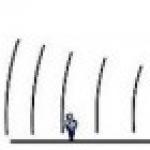The epilator is an indispensable item. Almost every woman has it. However, not everyone knows, for example, how to properly epilate legs with an epilator.
At first it may seem that there is nothing complicated in this. Bought the device, turned it on and use it for its intended purpose. But this is only in theory. In practice, hair removal is a very painful process, especially at the very beginning.
Learn how to properly shave your armpits and other areas.
Very often, even the instructions do not help in such a difficult matter as the first hair removal.
You will know how to use the epilator correctly only after a few procedures, when you study your problem areas and select the required speed.
Do not worry ahead of time, because there is a way out of any situation. To make epilation more enjoyable, study the tips that are written below:

- Short length. If before purchasing the epilator you shaved exclusively with machines, then before the first use you will need to leave the skin completely at rest for a couple of days. In order for the epilator to be able to capture the hair, it needs the optimal length. If the hair shafts are too short, using the epilator will be quite problematic.
- Low speed. Start your acquaintance with the device at low speeds. High speed, of course, allows you to spend less time epilating with an epilator, but in this case, tweezers can only remove fine hairs. But at first (especially if you shaved your legs with a conventional machine before using the appliance), the hair has a thick shaft, which can only be removed at low speed.
- Warm water. Remember, you should epilate your legs (and the rest of your body too) only after taking a hot bath or shower. You need to do this because the skin is steamed, and the pores on it expand. It is much easier and many times more comfortable than when you shave a “dry” surface.
- against growth. You need to epilate only against hair growth! Otherwise, you will simply drive the device over the same place many times, and this is extremely unpleasant. Even if you have a habit of shaving in all directions, eradicate it and use it new thing as it should be.
- Easily. It is not necessary to put pressure on the epilated skin during the epilation process. The device will not work better from such actions, but you will certainly get irritation. Use the epilator as smoothly as possible, without excessive pressure.
Different parts of the body - different approach
Before learning how to use an epilator, you need to consider exactly which area you want to see smooth, since each part of the body requires an individual approach.
Legs. The most problematic areas of the legs are the ankles and knees. The rest of the area quickly "gets used" to painful sensations, and after 5 minutes, epilating the legs is no longer so painful. Since the surface of the legs is even, getting rid of excess hair is not so difficult.
You can prepare for the upcoming hair removal with a scrub and a washcloth. About an hour before removal, steam the skin on the legs, then thoroughly scrub it and rinse it off. After that, rub your legs with a washcloth, thereby dispersing the blood.
Armpits. In this area, the skin is more delicate and sensitive, which means that it requires a more careful attitude. To make it less painful to shave your armpits with an epilator, you should slightly stretch the skin. So the probability of effective removal will be much higher.
If the hair is too long, it is better to cut it carefully before the procedure. After the hair is removed, it is better to treat the armpits with an ice cube and spread with baby cream.
Bikini. The bikini area with an epilator is by far the most difficult to shave. It is better to epilate the bikini area after using a freezing spray or other similar products.
Since the skin in this place is very delicate, you need to use the epilator in the bikini area carefully. After epilation, the skin must be treated with alcohol. It is also advisable to apply a baby moisturizer so that injured skin recovers as quickly as possible.
Conclusion
So, now you know how to properly epilate with an epilator and perform the procedure almost painlessly. The main thing is to follow the advice and listen to your body and the sensations that occur in it.
Do not forget how to use the epilator correctly, and take care of your body!
It is not easy to get rid of excess hair on the legs, modern girls make a lot of efforts for this. Many different methods provide desired results, however, to choose the right one, you have to try almost everything. Nowadays, leg epilation is carried out not only at home, but also in beauty salons, which allows you to get rid of annoying hairs not for a while, but forever.
General information about leg epilation
Leg hair removal is popular mainly among women. The goal is to get rid of excess hair and become more attractive. Men practice epilation as a profession if they work as dancers or perform in front of an audience.
Leg epilation involves the removal of hair (hair shaft and follicles) from the upper thighs to the feet. Habitual for many, shaving is depilation (that is, superficial removal, cut) and does not belong to this category of procedures.
Epilation at home
Epilation on their own is practiced by every second woman in our country. It is convenient, practical and much more affordable than a visit to a specialist. There are two main types of such procedures:
Bioepilation (skin smoothness up to a month)
Practiced since ancient times. This is epilation of the legs with wax or sugar. In stores, you can buy ready-made sets of cold or hot wax, which often contain additional components that provide moisture and soften the skin. cold wax already applied to paper strips, before use they are rubbed by hand to warm up. Then they are applied to the skin, smoothed and plucked against hair growth. The method is considered painful.

Hot wax pre-melt in a water bath to a liquid state, apply it to clean, dry skin with a spatula. For the procedure at home, strips of a dense, hard material should be prepared, with which the wax will be fixed. After hardening, the fabric is torn off against hair growth, thereby removing them along with the bulb.
Bioepilation is also carried out with sugar. The procedure is called sugaring, it is carried out according to the principle of wax, however, on the basis of a completely different composition. The epilation mixture is prepared on the basis of water, sugar and lemon juice. It does not contain preservatives and is absolutely safe, and can be used to remove excess hair during pregnancy or lactation.
If necessary, bioepilation is also carried out in the salon. At home, the cost of the procedure will not exceed 300 - 500 rubles, for professionals this price increases by 2 - 3 times.
Video: instructions for leg shugaring
The use of an electric epilator (skin smoothness up to a month)
An electric epilator is a device equipped with a roller that can grab hairs and pull them out along with the root. The stores offer a wide selection of models of epilators, including those with additional nozzles and a cooling system. However, the use of the device still provokes pain and discomfort. When epilating the legs, the electric epilator is used to a limited extent; it is not recommended to use it for treating the thighs due to the increased sensitivity of the skin in this area.
Video: epilation of legs with an epilator
Hair removal in the salon
Get rid of hair on the legs for more than a month is really only with the help of professional cosmetologists. In specialized institutions, the following high-tech methods are practiced.
The destruction of hair is carried out by means of light exposure. It destroys the follicle, which is in the stage active growth and does not affect adjacent soft tissues. The light does not affect dormant bulbs, which is why after a month the procedures are repeated and so on 4-6 times until the skin is completely smooth. Depending on the type of laser, the effect is on dark hair (through the melanin pigment) and light hair (through the vessels that feed the bulb). Contraindications to the procedure: skin diseases, pregnancy, diabetes. The laser eliminates hairs for up to 5 years. The cost is from 4000 rubles.

The method is also based on the generation of light pulses. They are absorbed by the dark hair melanin, then the light is converted into heat and destroys the hair follicle, which is in the stage of active growth. Photoepilation is carried out 5-7 times, after the sessions it is forbidden to sunbathe, visit pools and saunas. The procedure eliminates hairs for a period of 3 to 5 years. The cost is from 3000 rubles.

Epilation involves the removal of hairs along with the follicle. This process can be extremely painful, because the pain threshold for each person is developed to varying degrees. But if you follow the rules of home hair removal with an epilator, you can anesthetize or reduce discomfort to a minimum.
How to anesthetize epilation with an epilator
Such a spray can be easily found in any pharmacy, many people use lidocaine.
Pay attention to the country of origin of the drug: it is better to choose not domestically produced lidocaine, but manufactured in Hungary, as it is more effective in pain relief.
Anesthetic sprays are used to reduce pain during any type of epilation, both in beauty salons and at home when removing hair with a mechanical epilator.
To achieve a greater effect, spray generously with an even layer and wrap with cling film. Walk like this for two or three hours, then remove the film and feel free to start epilating with an epilator.
Yes, such a procedure takes time, but it will anesthetize the skin area and you will not have to endure pain, clenching your teeth.
Such a drug should be used if there is no spray. Before use, be sure to read the instructions and make sure that there is no allergic reaction to this drug.
If possible, consult your doctor. If your skin is sensitive and prone to allergies and irritation, stop using lidocaine.
The analgesic effect of lidocaine in ampoules is the same as that of a spray with it.
The principle of operation is the same as that of sprays.
The difference lies in the fact that the cream is suitable for skin anesthetization:
- armpits
- bikini zones;
- faces.
Anesthetic cream can be purchased at the pharmacy. Emla cream containing prilocaine and lidocaine has proven itself well.
To enhance the effect of anesthesia, it is necessary to act in the same way as with a spray: evenly distribute a dense layer of cream and wrap it with cling film on top, leave for a couple of hours before epilating with an epilator.
Do not forget to carefully study the instructions for use of the drug, conduct a test for allergic reaction and consult a doctor.
Taking pain medications
Numerous over-the-counter (OTC) pain relievers can help reduce pain with home epilator epilation.
It can be the simplest analgin or ibuprofen, tempalgin, nurofen and others.
By taking one of the above drugs at least half an hour before the epilation procedure, you can anesthetize the process quite well.
However, if you are unfamiliar with certain pain pills and are about to take them for the first time, then to avoid negative side effects for your body, consult your doctor for advice.
It is not at all necessary to resort to drug therapy, especially if you are going to epilate your legs with an epilator. There are less radical ways to anesthetize the epilation procedure.
Before the epilation process, you need to take a hot bath or stand in the shower for several minutes. Under the action of high temperatures and steam, the pores of the skin expand, which greatly facilitates the removal of hairs.
Do not forget that during the epilation process, the steamed area should not be wet, you must carefully wipe it with a towel before the procedure.
This method will anesthetize the epilation area sufficiently or at least reduce pain, try this option for epilation anesthesia and share your opinion with us in the comments.
Choosing a day and time for hair removal
Which days are the most sensitive?
The pain threshold rises in the first few days after the end of menstrual cycle this is of course not complete anesthesia, but it is on these days that you should plan an epilation.
What days are sensitivity heightened?
Sharply exacerbated sensitivity during the ovulation period, 3 days before the onset of critical days. It is not recommended to carry out the epilation procedure at this time.
If you need to do hair removal these days, use the painkillers listed above.
The best time of the day to epilate
The epilation process will be more painless if the procedure is carried out in the time interval from four in the afternoon to six in the evening.
However, you should not blindly trust this, in reality, each person has a different time of “least sensitivity”.
Have in your arsenal special attachments for the epilator
Manufacturers of electric epilators offer a wide range of attachments specifically designed to minimize different ways pain sensations.
Nozzle types:
- cooling:
the nozzle is filled with water and placed in the freezer. By cooling the skin, it eliminates the feeling of pain during epilation with an epilator and helps reduce the risk of irritation after;
This nozzle pulls out fewer hairs at the same time, which reduces discomfort.
- massage:
such a nozzle, due to vibration, interrupts the transmission of pain impulses through the nerve endings. Its mechanism of action is similar to rubbing at the site of a bruise, thanks to which it is possible to anesthetize the epilation process;
- In the process of epilation with an epilator, it is necessary to constantly hold the skin taut with one hand, and smoothly drive the device with the other. This method makes it easier to remove excess hairs and has a small analgesic effect.
- Immediately before the procedure, use a scrub on the areas that you are going to epilate. Thus, you will remove dead skin flakes, due to this, the hairs will rise and it will be much easier to remove them.
- Much depends on the length of the hairs. The shorter their length, the weaker the pain when they are pulled out. However, it must be borne in mind that too short hairs are difficult to capture with an epilator.
- Before removing hairs, you need to massage, pinch or anesthetize the area that you are going to epilate with an epilator or lubricate it with alcohol.
- Do epilation in the first few days after the start of the cycle, so as not to resort to strong painkillers. This is especially true for the bikini area.
- Move the epilator against the direction of hair growth. This will speed up the process of their removal and reduce pain.
- Avoid pressure with the device, guide the epilator at a slight inclination with smooth movements.
- It is worth starting the procedure from the area where the hairs are more rare and thin. This contributes to the gradual getting used to discomfort - it will be easier to endure the pain from epilation with an epilator of areas with a large number of hairs.
- If you do not have experience with an electric epilator and are just starting to master this device, do not use it immediately to remove hair in delicate areas (armpits, bikini area). To get started, gain experience using it to epilate your legs.

- You should not choose cheap models of epilators without additional features and attachments. They will only disappoint you, as they are not able to provide a high-quality, long-term result. It is better to purchase an epilator from a well-known, trusted manufacturer.
- If there are prominent moles or dilated vessels, these areas should be carefully avoided when epilating. However, if your device combines the functions of both an epilator and an electric shaver, then hair removal will be safe even in such areas.
- Use products that slow down hair growth, they are available in the form of sprays, gels, ampoules and creams. So you will have to resort to the epilation procedure with an epilator much less often and remember about the discomfort that accompanies it.
Smooth legs have already become the standard of beauty. However, unfortunately, it often happens that hair removal causes skin problems - inflammation, irritation, hives and other troubles. There are several ways to alleviate these symptoms and even prevent them from occurring during leg waxing.
How to prepare for leg waxing
There are a lot of depilation methods, but they cannot be called universal. Each of them requires proper preparation and care after the procedure. If you want your legs to look perfect, take care not only about an effective and suitable depilation method.
We also recommend reading:Properly prepared skin of the legs can improve the effect of the procedure and increase comfort during the procedure. In addition, you can prevent it from dryness and irritation.

Skin preparation depends primarily on the type of depilation you have chosen. If it is a mechanical or chemical method, then special preparation is required in addition to peeling. The more invasive the procedure, the more preparations will need to be made.
Hair removal using wax or sugar paste requires that they have the right length - a few millimeters is optimal. Thoroughly cleanse the skin of the legs the day before, and immediately before the procedure, take a warm bath. It will facilitate the removal of hair with bulbs, as the pores will expand.
More complex preparation will be required for laser hair removal or photoepilation. In this case, you will be carefully instructed by the beautician on how to proceed before and after the procedure. Since laser hair removal has a wide range of contraindications, including pregnancy and certain skin diseases, all this should be discussed with a specialist in a beauty parlor.

You should know as much as possible about this procedure in order to prevent possible complications. If everything is fine, then you will probably be asked:
- Prepare the skin so that it is clean and dry, you may need to apply a cream of lidocaine and prilocaine to numb it.
- Intensively moisturize the skin a few days before the procedure.
- One month before the procedure, stop using wax, electric epilator or sugar paste if you have previously used them for hair removal.
- Be careful with medicines containing hormones and some herbs, especially such as St. John's wort, calendula. They must be stopped a week before surgery.
- Do not use certain cosmetical tools such as retinoid creams or fruit acids.
- Do not visit the solarium, do not sunbathe and do not use. should not be tanned. Stop sunbathing should be in 6 weeks, use - in two weeks.
Skin care after epilation
Epilation often causes various complications such as irritation, rashes, ingrown hairs, folliculitis. Of key importance, as in the case of preparatory procedures, will be the type of depilation that you have chosen. When you can expect that after a few hours the hair will begin to grow, which may be accompanied by a sensation of itching. It happens that a rash or inflammation occurs. With this method of removing hair on the legs, it is extremely important that the razor is clean, sharp, and the treatment is carried out with the addition of a suitable shaving foam or gel. After epilation with wax, sugar paste or an epilator, a soft, soothing lotion containing aloe, panthenol or allantoin should be applied to reddened and irritated skin.
After laser hair removal, it may also be necessary to relieve irritation that may appear on the skin of the legs. This can be done with the help of special preparations. The beautician must definitely recommend you specific products that not only take care of irritated skin on the legs, but also slow down hair growth.

Remember that one epilation procedure is not enough to permanently get rid of unwanted hair. You need to go through several sessions within six months to get the desired result. Throughout this time, you should adhere to the recommendations above, as well as abandon creams and lotions containing alcohol.
ingrown hair
The problem with ingrown hair after depilation of the legs happens most often after using wax and an epilator. Germinating hairs cannot break through the epidermis, resulting in growth in the skin, causing inflammation of the hair follicles. This is mainly due to two reasons. Most likely, the hairs were not pulled out completely, but were broken or significantly weakened, as a result of which some of them were too thin to break through the skin. Another, less common cause is a change in the direction of hair growth. This is a characteristic and unpleasant consequence of the use of wax.

Therefore, it is recommended to use an alternative method - epilation with sugar paste. It does not cause such unpleasant symptoms, as it removes the hair in the direction of its growth, which is also much less painful. Moreover, there are no contraindications for its use in the form of allergic, hypersensitive or. The paste is made from completely natural ingredients.
If you are struggling with the problem of ingrown hairs, we remind you of a few important rules. First of all, before the epilation procedure, it is important to exfoliate and moisturize, as well as soften the skin. This procedure will facilitate the process of hair removal, as well as significantly reduce the risk of ingrown hairs. To do this, you can use both store-bought or, and home remedies made from products available at home. An excellent tool for cleansing the skin is a scrub from the thick of brewed coffee and a tablespoon. olive oil. By adding a little fragrant cinnamon, you will additionally get an antibacterial effect. Brown sugar or are also great for exfoliating the skin on your feet. As a rule, home cosmetics bring very good results, are inexpensive and do not contain artificial additives.

If there are ingrown hairs, then you can take the following actions: if they are located under the skin, use a sterile thin needle, previously thoroughly disinfected, and try to make an "exit" for their growth.
If there is inflammation, use a cream or ointment containing zinc. It dries them well and helps to reduce them. However, sometimes inflammations are very painful and extensive. In this case, you should seek medical advice and possibly even take a course of antibiotics. You should also think about choosing a different method of depilation.
Smooth, well-groomed legs are the pride of a woman and confidence in her beauty. But, unfortunately, after depilation, there are often backfire- redness of the skin, inflammation, ingrown hairs. But with tips on how to prepare for and care for your leg hair removal procedure, you will forget about this problem and enjoy the smoothness and beauty of your legs!
Nowadays, there are increased demands on the smoothness of the skin. The vast majority seeks to get rid of vegetation not only, say, under the armpits, but also on the legs, and seriously and for a long time. And no one cares about the fact that the hairs perform a protective function. Since there is a demand, there will be a supply, and therefore there are many ways to get rid of unwanted vegetation on the body. They are professional, that is, they are carried out in specialized institutions, or at home. Let's see what they are.



What it is?
Epilation is a process of getting rid of hairs, in which there is a partial or complete destruction of the bulbs.
Professional Hair Removal:
- Laser hair removal- hair removal with a laser. When exposed to it, the hair is very hot and from high temperature the follicle is destroyed. By resorting to this method, you can remove the hairs from the legs completely for quite a long time. However, this will require a course of a series of procedures, since the laser is able to destroy the hair that is in the active stage of growth, and this is about 80%. The rest are in a dormant state, but gradually become more active. If you have decided to laser hair removal, the presence of hairs no longer than five millimeters is allowed. You can not use an electric epilator, remove vegetation with tweezers and do various procedures that damage the follicle before laser hair removal. Sunburn should also be delayed before and after the procedure.

- Photoepilation- cleansing the skin from hair with the help of light. Melanin, absorbing high-pulse light, heats the hair and surrounding tissues. The blood in the vessels, which nourishes the root, coagulates, and the bulb does not receive nutrition. Thus, the death of the hair occurs.

Photoepilation is ineffective in the presence of gray or blond hair, as they lack melanin. People with dark skin should refrain from using this method to avoid burns, as the skin will be heated by the light due to a large number melanin.
Hairs 1.5 mm long is the optimal length for photoepilation.
It is only possible to use a razor or depilatory cream a few weeks before photoepilation.


- Electrolysis- getting rid of hair with the help of current, which is fed into the hair follicle with the help of the thinnest needle. The burn of the bulb provokes its death and the hair is then painlessly removed with ordinary tweezers.
The length of the hairs of three millimeters will be optimal for such a procedure.
- Elos hair removal involves hair removal using the Elos device, which acts on the hair follicle through broadband pulsed light and biopolar current. The operation of the device is distinguished by a point effect, which applies specifically to the hair shaft and does not affect the surrounding tissues, so the likelihood of burns during epilation is excluded.


At home
Although professional methods of leg hair removal have a lot of advantages, however, they are expensive procedures. Therefore, many people prefer to epilate unwanted hair at home. Let's figure out how to do it right at home and what methods you can use.
- Epilation wax. This procedure is carried out in professional institutions, but you can perform it at home. To do this, it is better to purchase wax strips. They are different shapes just choose the one that suits you. The leg area to be epilated must not be wet, otherwise the wax will not adhere well enough. Before the procedure, treat it with an antiseptic. Wax strips warm up in the hands for 10-15 seconds. Then you need to attach the strip to the leg and press it firmly. It is necessary to tear off strips with wax according to hair growth. Upon completion of the procedure, it is desirable to treat the area that has undergone epilation with an antimicrobial agent and apply a cream.


- Sugaring- this is hair removal using sugar mass, which you can buy in a specialized store or cook it yourself, thereby also reducing the cost of the procedure.
For self-preparation you will need:
- granulated sugar- 4 tablespoons;
- water- 2 tablespoons;
- citric acid powder- 1 teaspoon.



On low heat, it is necessary to dissolve sugar in water, as soon as this happens, add citric acid and cook until golden brown. Then you need to wait until it starts to cool and thicken. As soon as the mass stops burning, you can proceed to the procedure. Moreover, it is better to moisten your hands, otherwise the mass will begin to stick to them.
The solution must be applied against hair growth, and removed in the direction of their growth, after gluing a cloth to the area with the paste. After applying the composition, you must wait about two minutes. The skin of the legs, and even more so the thighs, has fewer pain receptors than the rest of the body and is not prone to irritation, but it is still better to treat this part of the body with an antiseptic before and after the procedure. And then apply a soothing cream.


- Home hair removal legs can be carried out with the help of a special device - an epilator. It consists of a body and a head. As a rule, it has a plastic case. On the head there are rotating elements equipped with many small tweezers. During rotation, they close and open, pulling out the hairs. The first such procedures, of course, are accompanied by pain, but after several sessions, the pain dulls and it becomes more comfortable. The device is powered by electricity.
Please note that there are epilators equipped with special massage inserts that make the procedure more comfortable.
As in the first two options, before and after the procedure, treat the area to be epilated with an antiseptic, and after its completion, also apply a soothing cream.

Contraindications
Epilation has a number of limitations and contraindications. These include diabetes, cancer, varicose veins leg veins, pregnancy, childhood(up to 18 years old), infectious diseases, mechanical damage to the skin. In addition, for example, photoepilation is ineffective when gray-haired and blonde hair on the legs, so they lack melanin or its content is low.
In addition, it is worth noting that pregnancy is a relative indication for some types of leg hair removal, for example, for an epilator. So, if you feel good and are used to doing it, and also have a high pain threshold, this procedure is not at all contraindicated. However, it is better to consult a doctor.

Preparing the skin for the procedure
To avoid such unpleasant phenomena as excessive skin irritation and infection, a number of measures must be taken. The optimal hair length for any hair removal is approximately three millimeters. Before the procedure of laser, electro-, photo- and Elos-epilation, hair must not be removed for a month using methods that damage the hair follicle. It is better to limit yourself to depilation with a machine or a depilatory cream for this time. In addition, before these procedures, you can not actively sunbathe for 14 days. The epilated area must be treated with an antiseptic.



How to remove irritation?
After epilation, the skin of the legs, as a rule, is always irritated, so the appearance of red dots, pimples and spots is not so uncommon. If the rash appears itchy, you can apply a cooling gel to the skin.
Few people manage to avoid irritation on their legs after epilation. If it does not go away, even after applying a soothing anti-inflammatory agent, try taking baths with a decoction of chamomile, calendula, or string. Never neglect the disinfection of the skin before and after the procedure, as epilation is a procedure that violates the integrity of the skin.
Currently, the pharmacy sells a lot of creams, ointments with regenerating and antibacterial properties.

How to deal with ingrown hairs?
If ingrown hairs appear, you can try to treat this area with a scrub. With it, the upper layer of the epidermis will be removed and the hair will be released. The released hair can be removed with tweezers and the area smeared with an antibacterial agent. If it is not possible to release the ingrown hair, it is better to consult a specialist to avoid inflammation.






